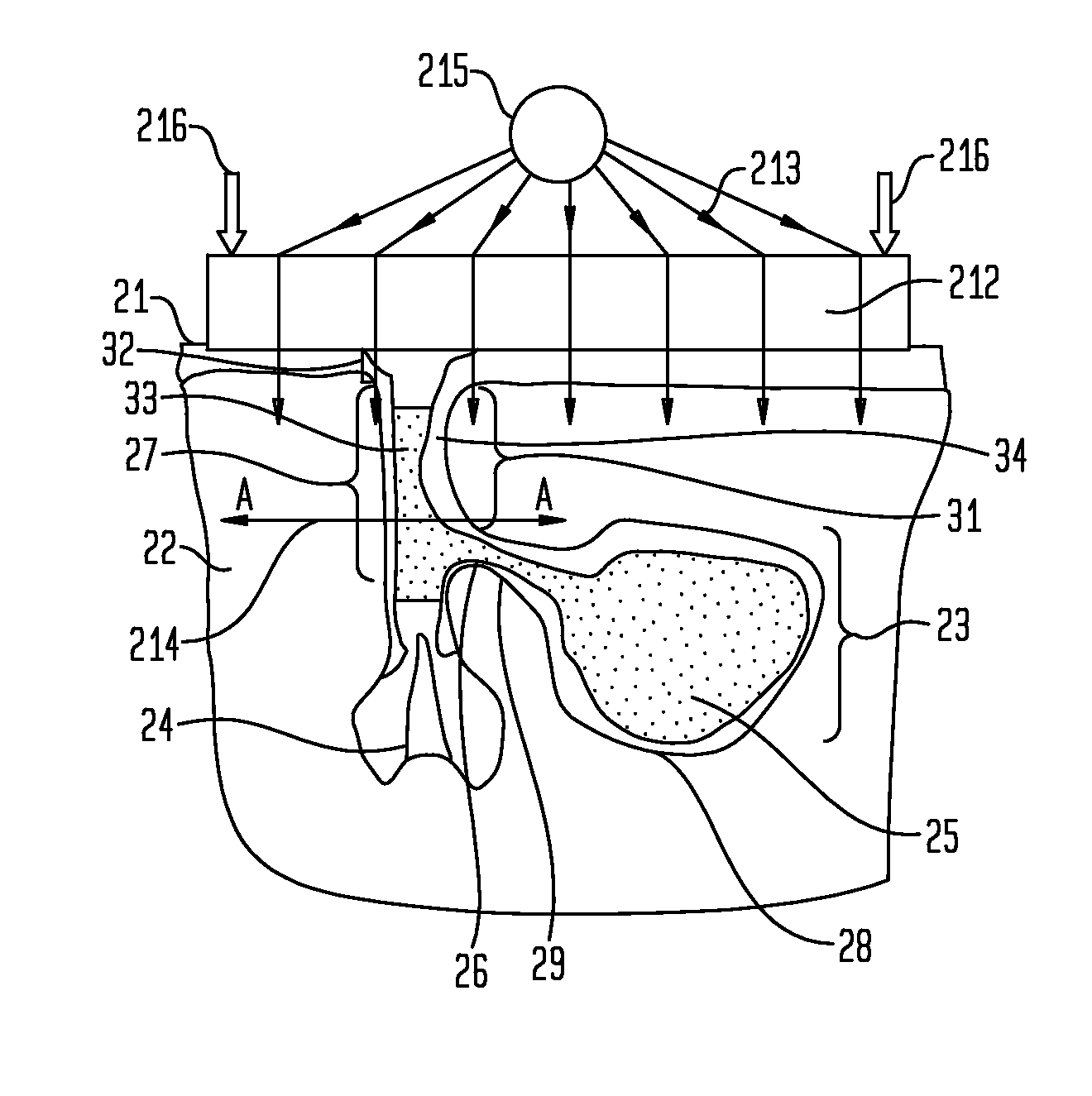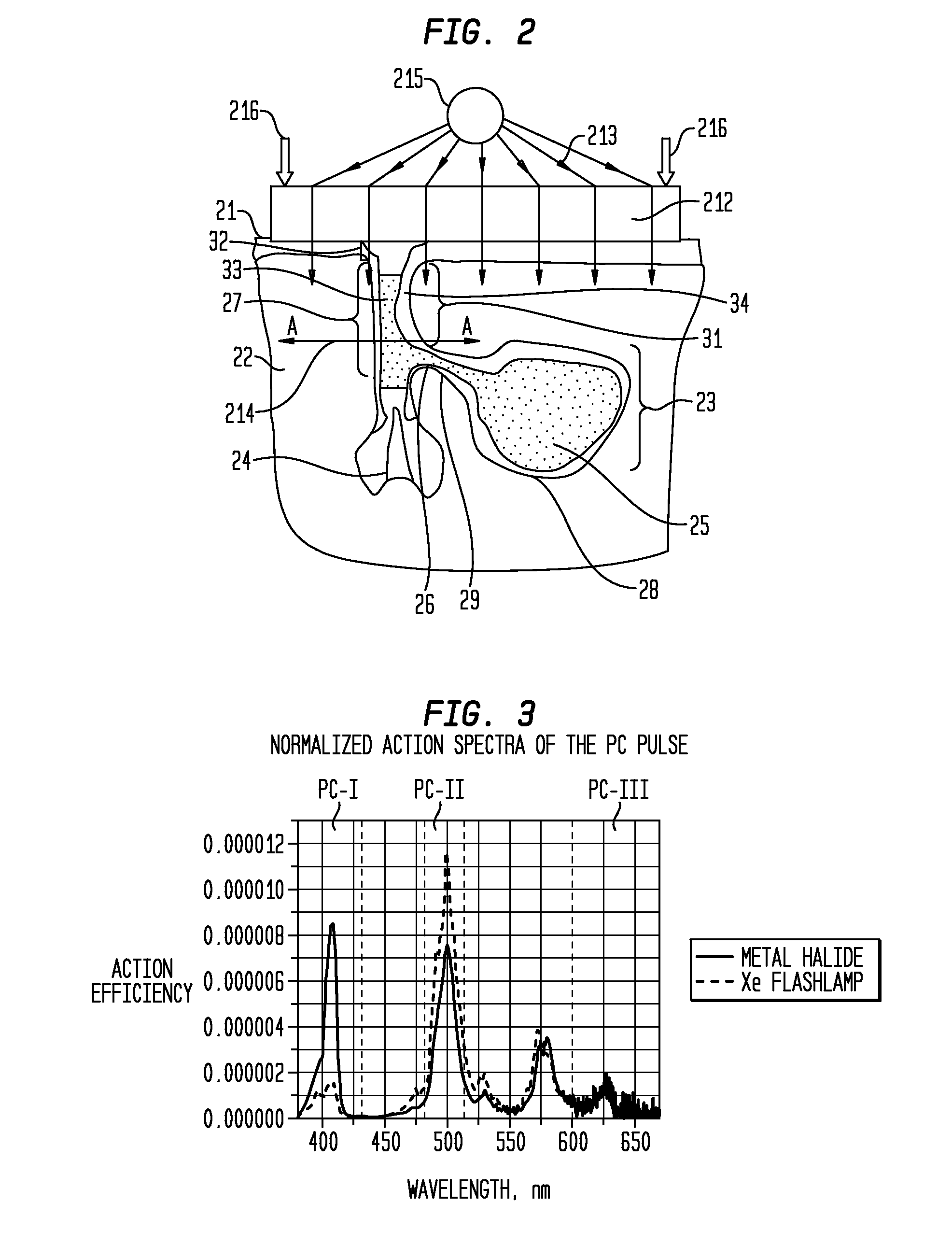Light treatments for acne and other disorders of follicles
a technology of acne and other disorders of follicles, applied in the field of acne treatment methods and systems, can solve the problems of limiting its use, destroying bacteria and clinical improvement of condition, and existing light-employing treatment techniques, and achieve the effect of enhancing the efficacy of applied radiation
- Summary
- Abstract
- Description
- Claims
- Application Information
AI Technical Summary
Benefits of technology
Problems solved by technology
Method used
Image
Examples
Embodiment Construction
[0043]This invention discloses how light energy can be efficiently used to treat the disorders of follicles described above. A combination of photothermal and photochemical mechanisms are used to achieve this goal by use of at least one of three treatments, one of which is optimized for photodynamic effect, whereas the other two are optimized for controlled heating of target tissue. One or more of the following steps are utilized:[0044]1. Applying pressure to the skin surface in order to reduce tissue inhomogeneity, decrease the distance that light has to travel from the skin surface to the gland, and expel blood from the vessels in the skin (most importantly, remove blood from the dermal plexus, which normally absorbs up to 30% of incident light energy in the blue spectral region);[0045]2. Cooling of the skin surface in order to reduce the temperature of the epidermis (thus protecting it from thermal injury) and to minimize the blood flow through the dermal vessels due to vasoconst...
PUM
 Login to View More
Login to View More Abstract
Description
Claims
Application Information
 Login to View More
Login to View More - R&D
- Intellectual Property
- Life Sciences
- Materials
- Tech Scout
- Unparalleled Data Quality
- Higher Quality Content
- 60% Fewer Hallucinations
Browse by: Latest US Patents, China's latest patents, Technical Efficacy Thesaurus, Application Domain, Technology Topic, Popular Technical Reports.
© 2025 PatSnap. All rights reserved.Legal|Privacy policy|Modern Slavery Act Transparency Statement|Sitemap|About US| Contact US: help@patsnap.com



